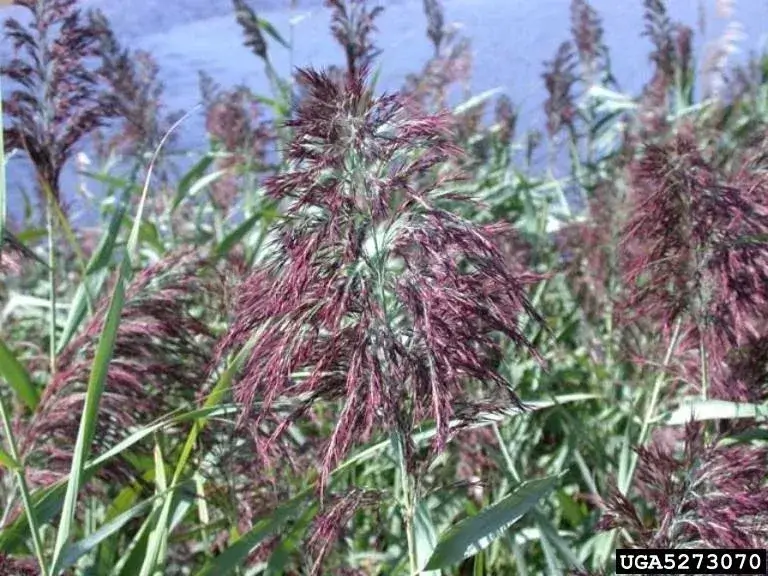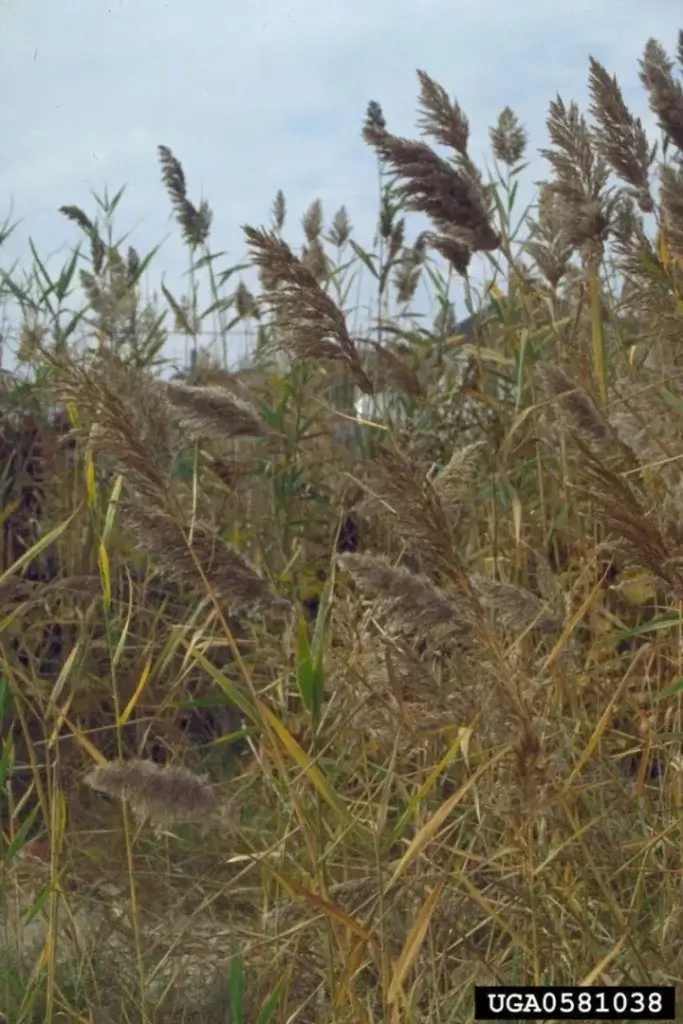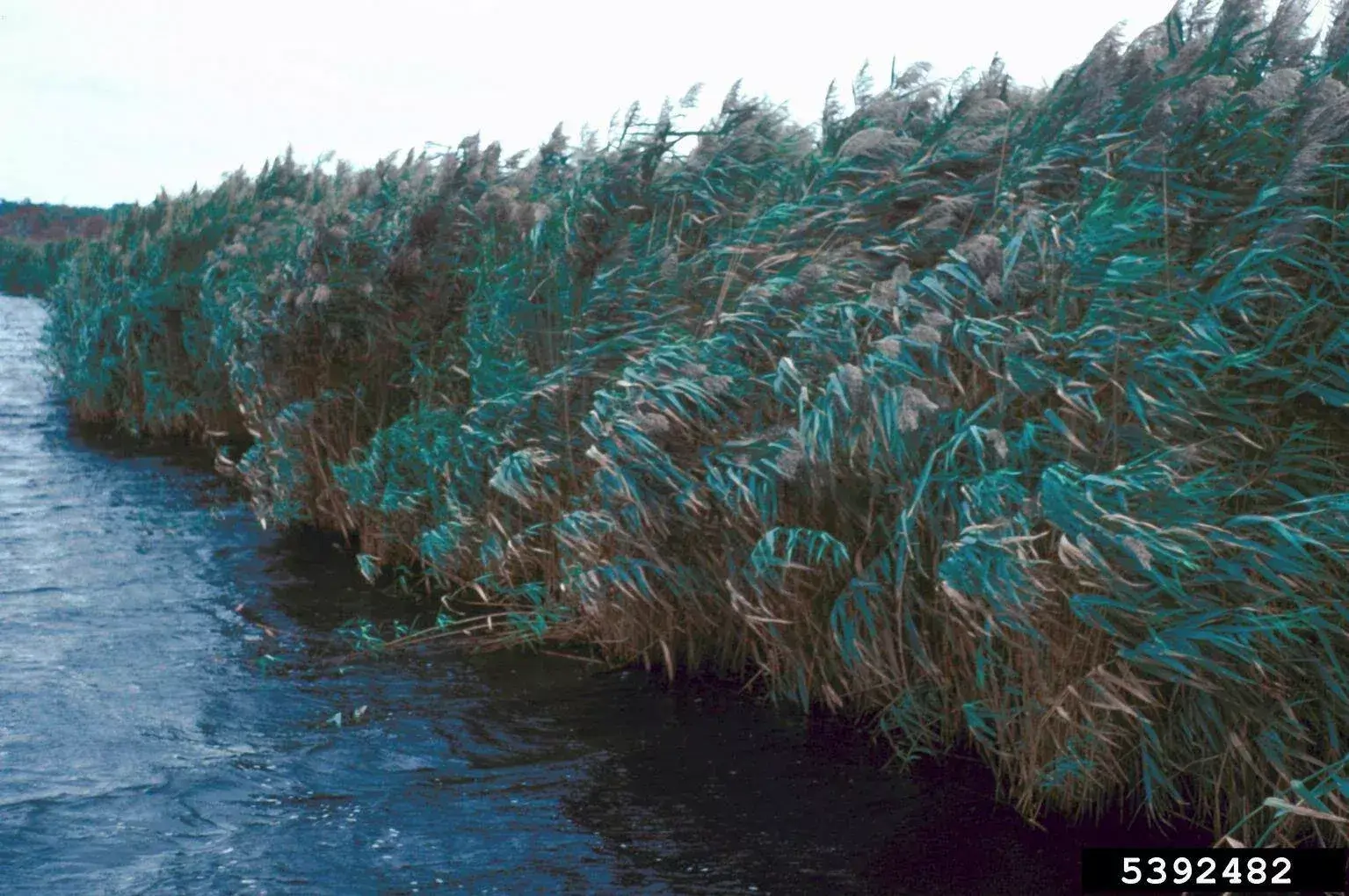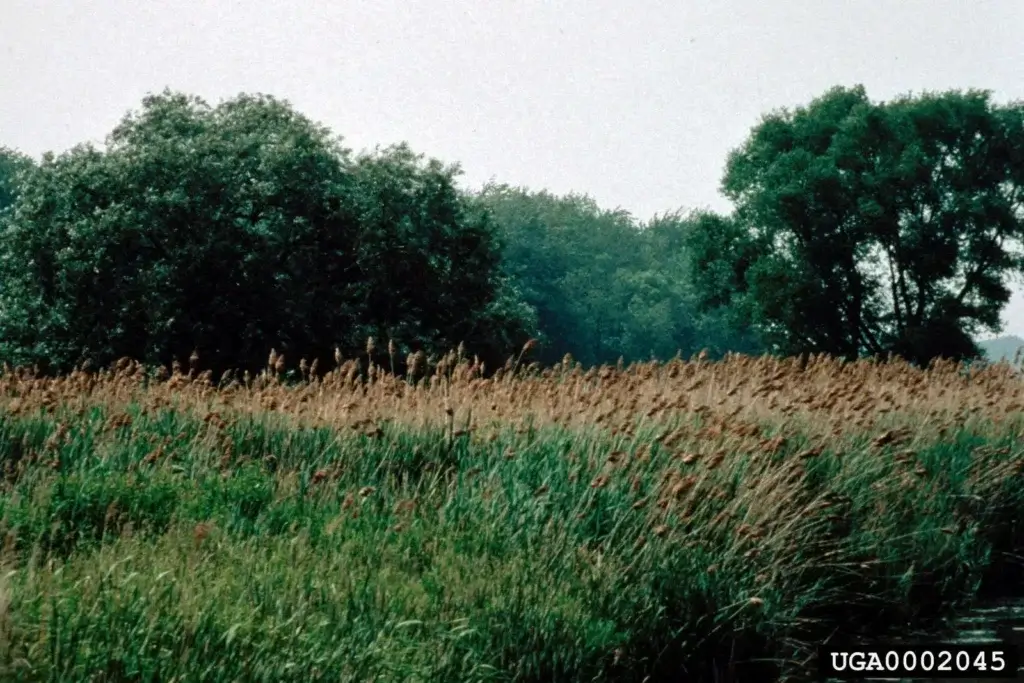
The non-native Phragmites australis, or common reed, can rapidly form dense stands of stems which crowd out or shade native vegetation in inland and estuary wetland areas. Phragmites turns rich habitats into monocultures devoid of the diversity needed to support a thriving ecosystem. Non-native Phragmites can alter habitats by changing marsh hydrology; decreasing salinity in brackish wetlands; changing local topography; increasing fire potential; and outcompeting plants, both above and belowground. These habitat changes threaten the wildlife that depend on those wetland areas for survival.
Common reed, Phragmites australis, is in the Poaceae or grass family. There are at least three lineages, or strains, of common reed in the U.S. At least one is native to the U.S. including the one that was most common in New York, P. australis subsp. americanus. Another common reed strain, P. australis var. berlandieri may or may not be native to the U.S. and is found in California, along the Gulf Coast, and in the Southeast. One strain is non-native, and was accidentally introduced from Europe in the late 18th or early 19th century in ship ballast. This non-native strain is now the most common Phragmites found in New York and the Northeast. There is no field evidence that the non-native will hybridize with the native Phragmites at this time. This fact sheet focuses on the non-native Phragmites.

The non-native Phragmites is a perennial grass that can reach over 15 feet in height. It is often found in dense clonal stands made up of living stems and standing dead stems. Stems of the non-native Phragmites are hollow, usually green with yellow nodes during the growing season, and yellow when dry in the winter. Phragmites leaves are blue-green to yellow-green, up to 20 inches long and 1 to 1.5 inches wide at their widest point. They are arranged all along one side of a stem.
In late July and August, Phragmites is in bloom with purple to gold highly-branched panicles of flowers. The seeds are grayish and appear fluffy due to the silky hairs that cover each seed. Spread occurs through rhizomes, stolons, and seeds; stolons can grow up to 43 feet from the parent plant.

Root growth belowground is also profuse. Phragmites forms a ticket of roots and rhizomes that can spread 10 or more feet and several feet deep in one growing season.
Each Phragmites plant produces thousands of seeds each year, but seed viability is low, although viability varies from year to year. New sites are established through seed movement and from rhizome fragments that float down stream or are moved in soil, especially along roadsides.
Large clumps of Phragmites can live for decades, but no part lives for more than 8 years.
There are physiological differences between the native Phragmites and the non-native Phragmites. See the Plant Conservation Alliance Phragmites Fact Sheet comparison table for details.


The non-native Phragmites occurs throughout the eastern half of the U.S. and in Colorado. In New York, Phragmites is ubiquitous, growing in roadside ditches and swales; tidal and non-tidal wetlands; freshwater and brackish marshes; river, lake and pond edges; and disturbed areas. It tolerates fresh and moderately-saline water and prefers full sun.



Due to the similarity of non-native Phragmites and native Phragmites, proper identification of the grass is important before taking management action. Due to Phragmites growth in sensitive habitats, be sure to have a restoration plan in place for the area once Phragmites has been eliminated. Phragmites roots hold onto soil, and clonal colonies trap nutrients and organic matter and add to the organic matter in the soil. After Phragmites colonies are removed the soil may be more prone to erosion.
To control Phragmites a number of tactics may be used, but due to the many variables at each site many suggest that Phragmites management should be “site-specific, goal-specific, and value-driven.” Often multiple tactics are needed to ensure success. The best time to manage Phragmites is in midsummer when it is releasing pollen. Thorough monitoring and follow-up management are necessary to control shoots from surviving rhizomes.
Prevention
Maintain, or plant, vegetation that competes with Phragmites. Jesuit’s bark (Iva frutescens), groundsel-tree (Baccharis halimifolia), black rush (Juncus roemerianus), and saltmeadow cordgrass (Spartina patens) have been shown to limit Phragmites spread. Also, reducing nutrient loads may restrict the spread of Phragmites.
Mechanical
Repeated mowing may produce short-term results and repeated stem breakage in high-water years has been shown to kill large portions of Phragmites colonies. Hand pulling is not feasible due to the expansive and tough root and rhizome network. Root removal from the soil is not effective as small or broken portions of rhizomes left in the soil can create new plants.
Hydrologic
Manipulating the water level around Phragmites has been shown to decrease populations in some conditions. Consult the Element Stewardship Abstract for Phragmites australis produced by the Nature Conservancy for more information. http://www.invasive.org/gist/esadocs/documnts/phraaus.pdf
Chemical
There are herbicides available for Phragmites control. New colonies, with smaller root and rhizome systems, are easier to control with herbicides. Apply after the plant has flowered, in late summer or early fall. Applications can be foliar, cut stump, or injected. Multiple years of treatment may be necessary to eliminate any surviving rhizomes. Herbicides applied in wetland areas must be applied by a certified pesticide applicator. Contact your local Cornell Cooperative Extension office, http://www.cce.cornell.edu, for herbicide usage assistance. Always apply pesticides according to the label directions; it’s the law.
Fire
Prescribed burns have been shown effective when conditions are right, and can occur in conjunction with herbicides or water level management. To be successful as a stand-alone tool, burns need to be hot enough to kill rhizomes in the soil. After herbicide treatments, burns can remove standing dead stems to make way for desirable vegetation. Flooding after burns will limit soil air to surviving rhizomes. Burns should be conducted once flowering has occurred. For more information on controlled burns, see the USDA Forest Service Fire Effects Information System “Phragmites australis Fact Sheet,” Fire Effects section at https://www.fs.usda.gov/database/feis/plants/graminoid/phraus/all.html
Ecology and Management of Invasive Plants Program, Phragmites australis page Cornell University. September 8, 2011.
Gucker, Corey L. 2008. Phragmites australis. In: Fire Effects Information System, [Online]. U.S. Department of Agriculture, Forest Service, Rocky Mountain Research Station, Fire Sciences Laboratory (Producer). Available: http://www.fs.fed.us/database/feis/plants/graminoid/phraus/all.html [2011, September 7].
